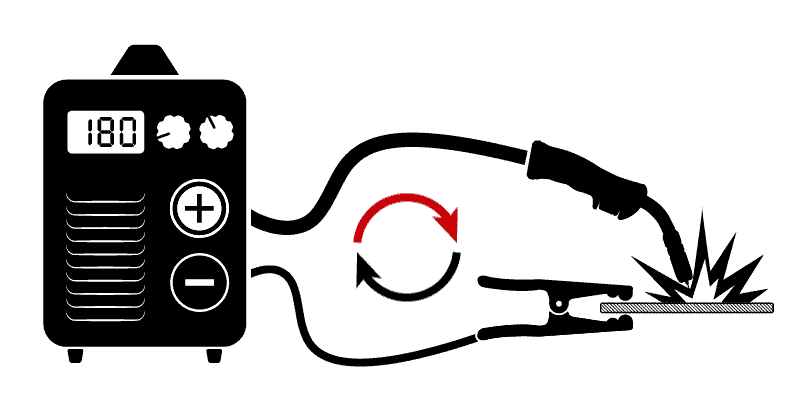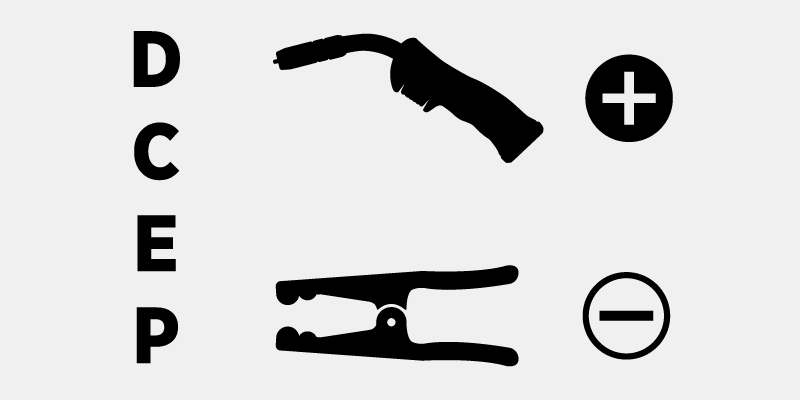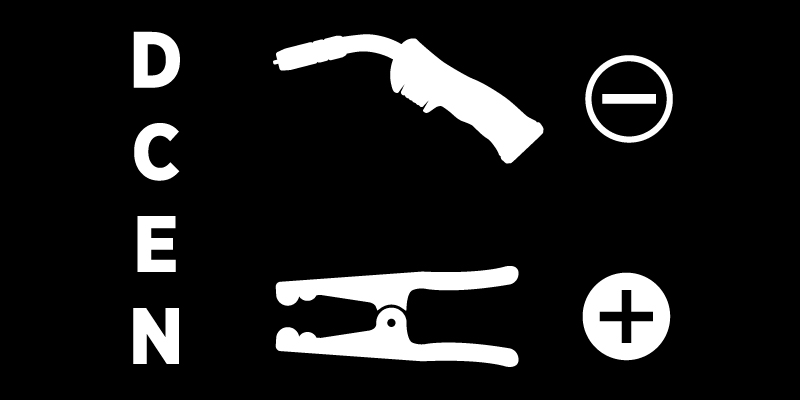What is MIG Welding: The Basics for Beginners
April 18, 2022
There are a few different types of welding (depending on who you ask, there’s up to nine), but one of the most common is MIG welding. It’s one of the easiest types of welding to learn, it’s versatile, and it’s simple to set up, but what exactly is MIG welding, and why is it so good?
What is MIG Welding?
Metal Inert Gas (MIG) welding is an arc welding process in which a solid wire electrode is continuously fed through a welding gun into a weld pool. An arc is formed between the wire electrode and base metal, melting the base material while consumable filler wire is deposited, creating the weld.
At the same time, a shielding gas is fed through the welding torch to protect the weld from outside contaminants.
MIG welding is also known as Gas Metal Arc Welding (GMAW).
How Does MIG Welding Work?
The MIG welding process is relatively straightforward, and most of it is automated too.
MIG welding is always done on direct current (DC), which means that the current only runs in one direction. Like a battery, it requires a completed electrical circuit to work. All the components of the welder work together to form this circuit.

First, a wire spool is loaded into the machine. This wire is fed through the driver rollers, into the torch liner and out of the contact tip and nozzle. The wire will start feeding continuously when the torch trigger/button is pressed and stop when it’s released.
Pressing the torch trigger will also start the gas (if it’s needed), which is fed through the nozzle to shield the weld.
The wire plays two parts: heat source and the filler material. When the wire passes through the copper contact tip, it becomes electrically charged with the welding current. The wire comes out of the torch and touches the base metal, creating an arc between the two.
That’s the first half of the electric circuit formed.
The arc melts both metals, depositing filler metal into the molten base metal to form a weld. There are several ways filler metal can be transferred from the torch into the base. Your normal MIG welding transfers metal via the short circuit mode.
Check out our post on short circuit welding and the other modes of metal transfer to learn more.
The final piece of the puzzle is the earth clamp. Without it, your machine won’t arc. You can still pull the trigger and feed the wire through your torch, but all you’ll end up with is wasted wire.
The earth clamp completes the electric circuit that runs from the machine, through the torch, into the base metal, and then back up the earth clamp to the machine.
On top of that, getting a proper grounding is important because a bad earth can cause several issues, including burnback and a wandering arc.
MIG welding is considered a semi-automatic process. The wire feeding is automatic, but the torch movement is still manual, making it semi-auto.
Settings (Voltage & Wire Feed Speed)
There are only two settings on MIG dedicated machines: voltage and wire feed speed.
The voltage determines how much heat is in the weld. Turning it up or down will adjust how much welding current is added to the weld.
The wire feed speed determines how much wire per minute is added to the weld. The more wire that’s added, the cooler the weld will be, and vice versa.
Your voltage and wire feed speed generally work in harmony together. If you turn your wire feeding to the max but leave your volts too low, the wire won’t burn. You need enough heat to melt the wire, but not so much heat that it gets sprayed everywhere except in the weld.
What you want to set them to depends on a few things. The metal thickness, the metal type, filler wire thickness, weld position and joint type will all impact the settings.
If you’re not sure where to start, almost every UNIMIG MIG welder comes with a Setup Guide on the inside of the machine’s door. It provides recommended settings for different metal types, metal thicknesses and wire sizes as a starting point. It also includes the gas flow and polarity recommended for each application.
Polarity
Getting the polarity right is pretty important, as it impacts the quality of the weld. The wrong polarity will leave you with excessive spatter, an uncontrollable arc and poor penetration.
Gas MIG welding runs on an electrode positive polarity. That means the current is positively charged and runs from the negative to the positive. It’s most commonly referred to as reverse polarity or DCEP (Direct Current Electrode Positive).
To set up a UNIMIG welder for DCEP, plug the polarity cable in the positive (+) panel mount and the earth clamp into the negative (-) panel mount.

In our case, the polarity cable acts as the torch because all of our MIG torches come with a Euro quick-connect plug. If your machine doesn’t have a Euro connection, it’ll plug directly into the dinse connecter.
Keep in mind, only gas MIG uses DCEP. The polarity is flipped to DCEN (Direct Current Electrode Negative) if you’re looking to weld with flux-cored (gasless) MIG wire.
That means you’ll plug your torch/polarity cable into the negative (-) panel mount and your earth clamp into the positive (+) panel mount.

Metals
MIG welding is one of the more versatile when it comes to the different materials that it can be used on. These metals include:
- Mild steel
- Stainless steel
- Aluminium
- Copper
- Bronze
Wire Electrode Selection
There are two things to consider when picking your filler wire. Making sure the base and filler metals match and getting the right size.
You want your wire metal and its grade to be as close a match to your parent metal as possible. If you’re welding with mild steel, you’ll need mild steel wire. If you were welding aluminium, you could choose 5356 or 4043 or another grade wire, depending on your parent metal.
Filler wires of the same metal as your base metal will work even if the grades aren’t an exact match. Don’t worry if you’re not sure what grade your metal is; just match the metals.
The other thing to consider is how thick your wire is. If you’re working with sheet metal, you’re not going to want filler wire that’s 1mm thick. Your wire should be thin enough that it’ll melt but thick enough that there’s enough metal deposited to form a proper join.
A good all-around wire size is 0.8mm. You can drop down to 0.6mm for very thin metal or go up to 0.9mm for thicker applications.
Shielding Gas
Shielding gas is used to protect the weld from outside contaminants. The gas you can use will vary depending on the type of metal you’re welding. Different gases also have different effects on the weld.
The most common (and generally best) shielding gas you can use for mild and stainless steel is a 75% argon/25% CO2 mix. It helps stabilise the arc and deepen penetration while shielding the weld. For aluminium welding, pure argon gas is needed for shielding.
These aren’t the only two that are available, though. For a full list of all the different gases you can use, check out our post on choosing a MIG gas.
Common MIG Fabrications and Applications
MIG welding can be used on a wide range of metals across a wide range of thicknesses. It’s also one of the fastest ways to weld. These factors combined make it the most commonly used welding method across several industries.
Some of the most common uses of MIG include:
- Home hobby use and DIY projects – the relative ease of MIG welding makes it a perfect option for first-time welders and weekend warriors
- Automotive repairs – MIG’s ability to weld sheet metal at speed makes it a preferred method for car repairs, as it’s a faster option than TIG
- Farm repairs and outdoor use – the gasless MIG option (otherwise called FCAW) means it’s practical for the outdoors and other off-grid applications
- General fabrication – frames, trailers, etc. are usually done with MIG
- Construction – its speed, ability to weld relatively thick metal (16mm @ 350A) and minimal clean up (compared to stick welding) makes it a time and money saver across construction applications
Advantages of MIG
There are a lot of things that make MIG a great choice, not just the fact that it’s easy to learn (though that is one of them!).
- It’s versatile. MIG welding can be used on a wide variety of metal types and thicknesses, covering most welding applications.
- It’s more efficient, with higher productivity compared to other methods. Because MIG wire comes in large spools (1kg, 2kg, 5kg & 15kg), there’s less downtime than if you were swapping rods or chipping off slag. It also has a higher deposition rate, and there’s no electrode stub loss.
- It’s fast. On top of not needing to constantly replace your filler, MIG welding is the fastest type of welding.
- It’s easy to learn. Being a semi-automatic, point-and-weld process with two settings makes it the best type of welding to learn as a beginner.
- It welds in every position. MIG welding works regardless of whether you’re in a flat, horizontal, vertical, or overhead position.
- It’s relatively clean. Okay, so it’s not as clean as TIG welding, but MIG still produces minimal spatter, and there’s no slag involved at all, saving you time and effort.
- It produces aesthetic, high-quality welds. The ease of use, automatic wire feeding, and clear visibility of the weld pool means producing a good weld is easy.
Disadvantages of MIG
While it might be the most popular type of welding, that doesn’t mean there aren’t a few downsides to MIG.
- The initial cost. When first purchasing a MIG welder, the cost of the machine, gas, filler wire and other consumables can add up. It’s not as cheap to get going with MIG as it is with stick. The good news is that your MIG machine should last you years.
- It’s not suited for the outdoors. Any kind of wind or breeze will blow your shielding gas away, leaving your weld exposed to contaminants. However, there are some solutions, like setting up welding curtains or other barriers. You could also swap to gasless MIG.
- It’s not very portable. The fact that you need a bottle of gas means that moving the welder around frequently isn’t the easiest task.
- It can’t weld through dirt and rust. Your base metal will need to be clean before it can be welded on. This is true of most welding, though there are more forgiving weld methods than MIG in this regard.
In summary, MIG welding is fast, efficient, simple to set up, easy to learn and used for almost everything. If you’re just getting into the world of welding, it’s the perfect place to start.